You can import your sales orders directly into Tradevine via the Import Orders screen available from the Sales menu.
We accommodate; csv (comma separated data) and tab delimited files. These are usually files which have either a csv or txt file extension.
Currently, it is only possible to import, not to re-import. Once the sales orders have been imported, any modifications will need to be done by editing the order itself.
If you intend to import files that were exported out of Magento or OpenCart, then you will need to install an Extension into Magento or Opencart, so that the export file will create the data needed to enable us to easily import your sales orders into Tradevine.
Importing from your own file
We recommend you check out how we expect some of the import data to be formatted, before attempting your first import. If your first attempt threw up some error messages in the import error file, then again please check out how some of the data should be formatted.
You can download a blank import template file to use to import your products. Once you have downloaded this file, feel free to rename it with any name, but you must save it as a csv type file, not an xls or xlsx type file.
You can also download an example file with example data. Do not use this file to import with.
The import consists of 5 steps.
Step 1 is for selecting and uploading your file.
Step 2 is about mapping your file fields to our fields.
Step 3 is a last chance check for confirming the mappings.
Step 4 is the progress and status of the actual import.
Step 5 shows the results of the import.
Step 1
From the Import Sales Orders screen you can select and upload your import file.
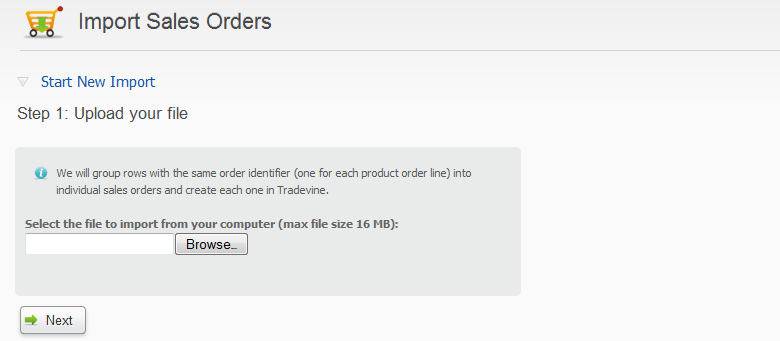
Select the Next button to progress to the next step.
Step 2
This is where you get to map the fields from your file to our fields. We will first try to automatically match as many unique fields as we can, to try to save you some time. Make sure you check these mappings very carefully. When selecting the field to map from, any field which has already been mapped, will be greyed out in the dropdown selector. You can still use the greyed out fields for other fields and as many times as you like.
You need to tell us, if your file has column headers. Make sure you give the First row contains headers checkbox a little attention too.
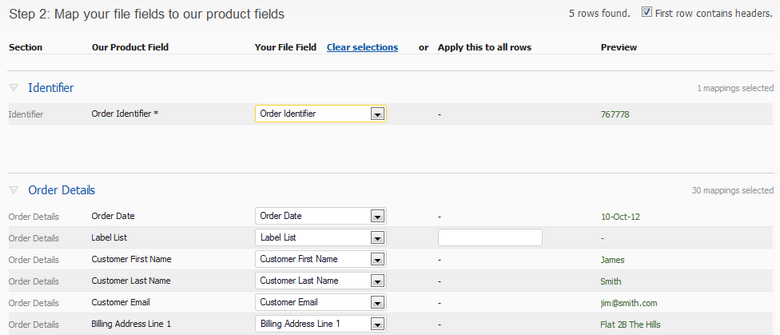
We allow you to apply a consistent value to some of the fields. Use the droplists and text fields under the Apply this to all rows column to overwrite any file data and set all the values for that field to a specific value.
We also provide a small preview of the first row of data, as a visual clue to help ensure the correct fields have been hooked in.
Step 3
This is where you get a last chance to check the mappings. Please make sure you do, otherwise, this is likely to be garbage in garbage out.
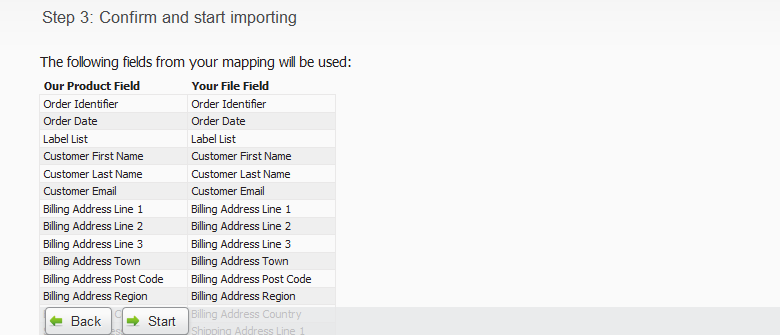
You can go back to correct your mappings at any time by selecting the Back button. Otherwise, select the Next button to go to the next step.
Step 4
Shows you the progress of the import.
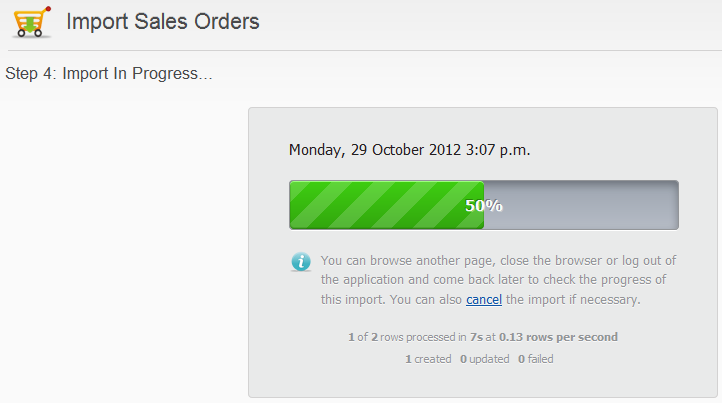
You can cancel at any time by selecting the Cancel link below the graphic. Cancelling does not do a roll back. It simply stops any further records from being created.
Step 5
Shows the final results of the import.
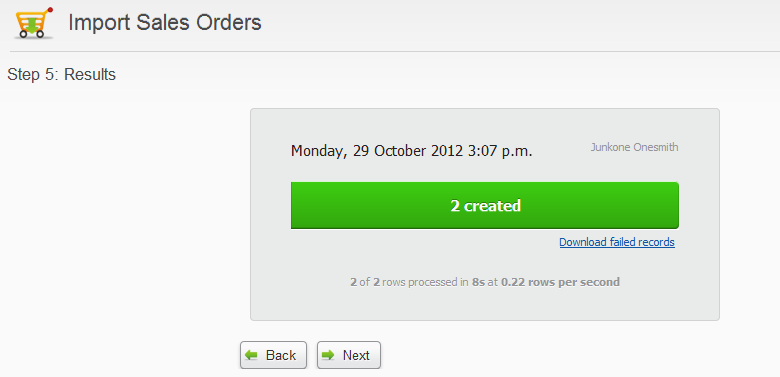
Any failures can be viewed by selecting the Download failed sales orders link. The download is a csv file. All errors are reported in the first column of the file and the column is captioned Error Messages. The Error Messages cell may detail more than one error.
Once you have remedied any errors, you can re-attempt the import. You may still encounter some new errors which need rectifying. Again after fixing these, just re-attempt the import. Any sales orders which were successfully uploaded will not be uploaded in any subsequent imports.
Once you have completed an import, the Most Recent Import link is available at any time when re-opening the Import Sales Orders screen. This lets you review the status of the last import, as well as download a failed import file if the import failed for any of your products.